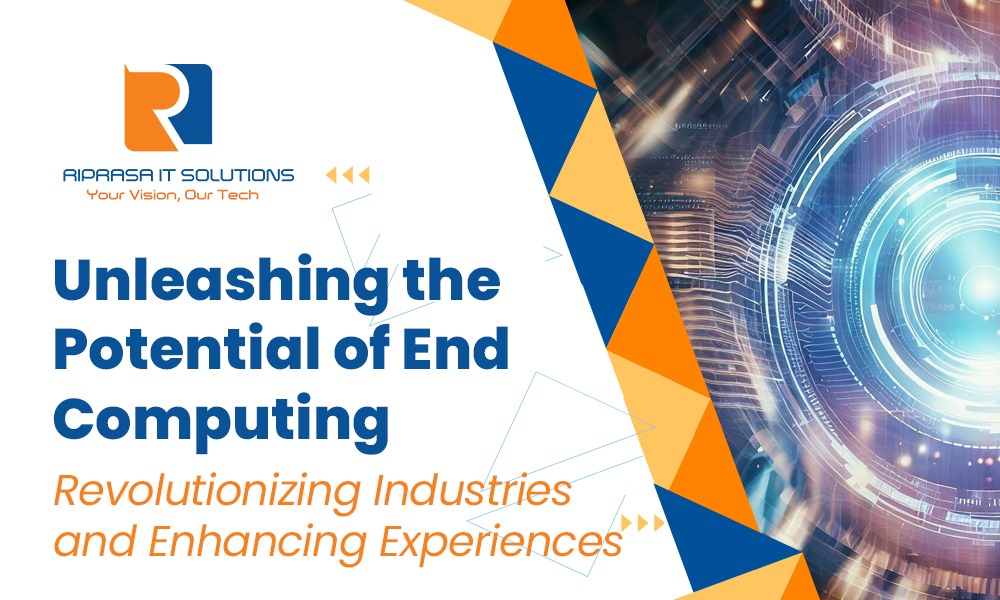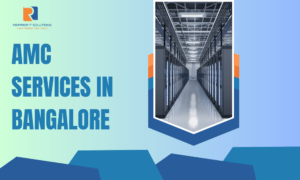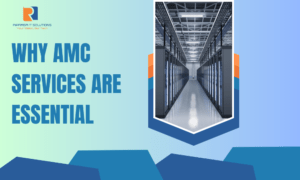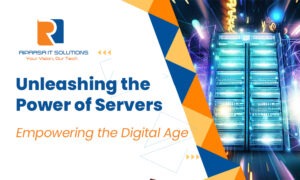Introduction:
In the ever-evolving landscape of computing technology, end computing has emerged as a paradigm that holds immense potential for the future. This article delves into the advancements, impacts, and transformative effects of end computing on businesses, industries, and society as a whole.
We will explore the potential of end computing in the digital age, its role in data analytics, artificial intelligence, and machine learning, as well as its applications in healthcare, smart cities, and other sectors. Join us on this captivating journey as we unravel the future prospects and trends of end computing technologies.
Table of Contents:
- Introduction
- Advancements in End Computing Systems
- Impacts of End Computing on Businesses
- The Transformative Effects of End Computing
- End Computing Applications in Various Sectors
- Security and Privacy Concerns in End Computing
- Synergy between End Computing and Edge Computing
- Impact of End Computing on Cloud Infrastructure
- Future Prospects and Trends of End Computing Technologies
- Conclusion
Advancements in End Computing Systems
Advancements in end computing systems have led to transformative possibilities through hardware innovations and software optimizations:
- Hardware Innovations:
- Evolution of microprocessors and embedded system.
- Powerful and efficient end computing devices
- Integration of robust computing capabilities into smartphones, wearables, and industrial sensors
- Software Optimizations:
- Distributed architectures for seamless coordination and resource utilization
- Efficient utilization of processing capabilities at the network edge
These advancements have enabled end computing systems to become more powerful, energy-efficient, and capable of handling complex tasks. They have also facilitated the integration of advanced computing capabilities into smartphones, wearables, and industrial sensors.
Software optimizations, such as distributed architectures and efficient resource utilization, have enhanced system performance and scalability. Overall, these advancements have paved the way for transformative applications in the field of end computing.
Read out UNDERSTANDING NETWORK SWITCHES: A BEGINNER’S GUIDE
Impacts of End Computing on Businesses
The adoption of end computing systems has had a profound impact on businesses across various sectors, introducing significant advancements and benefits:
- Enhanced Performance and Efficiency:
By leveraging end computing systems, businesses can experience reduced latency and real-time capabilities, which translate into faster data processing and analysis. This improved speed enables organizations to make quicker decisions and respond more efficiently to changing market conditions.
- Cost Reduction and Resource Optimization:
One of the notable advantages of end computing is the minimized reliance on expensive cloud infrastructure. Instead of relying solely on cloud-based services, businesses can leverage end computing devices to perform tasks locally, reducing the need for extensive cloud resources. This reduction in dependency on cloud infrastructure results in substantial cost savings and improved operational efficiency.
- Data Analytics and Insights:
End computing systems enable businesses to conduct real-time data analysis, providing them with valuable insights into various aspects of their operations.
Real-time analysis allows organizations to gather and interpret data as it is generated, enabling faster decision-making processes.
These insights not only enhance operational efficiency but also provide a competitive advantage by enabling businesses to identify trends, patterns, and opportunities in their data.
Overall, the adoption of end computing systems brings enhanced performance, cost reduction, and data-driven decision-making capabilities to businesses. By harnessing the power of end computing, organizations can streamline their operations, optimize resource allocation, and gain valuable insights that drive innovation and growth.
The Transformative Effects of End Computing
End computing has the potential to bring about a paradigm shift in industries, ushering in a new era of innovation and transformation. Let’s explore the transformative effects of end computing in more detail:
- Reshaping Industries:
End computing systems have the capability to enable new business models and disrupt traditional processes. By integrating end computing devices and solutions into various industries, such as healthcare and smart cities, businesses can revolutionize the way they operate. For instance, in healthcare, end computing facilitates remote patient monitoring, personalized treatment plans, and efficient data management. Similarly, in smart cities, end computing plays a crucial role in optimizing urban infrastructure, improving resource allocation, and enhancing the quality of life for citizens.
- Empowering Data Analytics and Insights:
End computing systems empower businesses to extract meaningful patterns and trends from vast amounts of data in real-time. By leveraging the processing capabilities of end devices, businesses can perform data analysis and derive actionable insights on the spot.
Real-time analytics not only enhances decision-making processes but also enables businesses to deliver personalized user experiences and improve operational efficiency. With end computing, organizations can unlock the full potential of their data and gain a competitive edge in the digital age.
- Artificial Intelligence and Machine Learning:
End computing opens up new possibilities for localized intelligent decision-making without constant connectivity to the cloud. With the integration of AI and machine learning algorithms into end computing devices, businesses can process data locally, enabling faster and more efficient decision-making.
This has far-reaching implications in various domains, including autonomous vehicles, smart home automation, and industrial automation. End computing empowers these systems to operate in real-time, adapting to changing conditions and making intelligent decisions based on local data.
End Computing Applications in Various Sectors
End computing is widely applied in various sectors, bringing advancements and transforming industries. Here are some notable applications:
- Healthcare:
- Revolutionizing patient care and monitoring with wearable devices and sensors.
- Real-time collection, analysis, and sharing of health data for personalized treatment plans.
- Smart Cities:
- Enhancing urban infrastructure and services through real-time data processing and analytics.
- Optimizing traffic flow, resource allocation, and improving the overall quality of life.
- Data Center Optimization:
- Alleviating the burden on centralized data centers.
- Accelerating data processing, reducing latency, and enhancing system performance.
These applications highlight the transformative impact of end computing in critical sectors such as healthcare, urban development, and data management. By leveraging the power of end computing, industries can achieve significant advancements, improve efficiency, and deliver innovative solutions that positively impact people’s lives.
Security and Privacy Concerns in End Computing
While end computing brings numerous benefits, it also raises security and privacy concerns. These concerns include:
- Robust Security Measures:
- Encryption, access controls, and authentication protocols to safeguard sensitive information
- Ensuring confidentiality, integrity, and availability of data in end computing environments
- Compliance with Data Protection Regulations:
- Addressing privacy concerns and protecting personal information
- Adhering to data protection regulations to maintain user trust and confidence
- Data Breach and Cybersecurity Risks:
- Mitigating the risk of data breaches and unauthorized access to end computing devices
- Implementing robust cybersecurity measures to prevent data loss or compromise
Synergy between End Computing and Edge Computing
End computing and edge computing are closely related concepts that work in synergy to enable efficient data processing and storage at the network edge. The synergy between these two technologies includes:
- Collective Intelligence of Edge Devices:
- Leveraging the power of interconnected devices in edge computing networks
- Achieving greater scalability, reliability, and resilience in computing systems
- Enhanced System Performance:
- Offloading processing tasks to the edge, ensuring faster response times
- Reducing network traffic and bandwidth requirements for improved user experiences
Read Out CHOOSING THE RIGHT FIREWALL FOR YOUR BUSINESS
Impact of End Computing on Cloud Infrastructure
End computing has a significant impact on cloud infrastructure. This impact includes:
- Decreased Reliance on Cloud-Based Resources:
- Decentralization of data processing and storage with end computing
- Reduced network traffic, bandwidth requirements, and operational costs for cloud service providers
- Complementary Role to Cloud Infrastructure:
- Offloading processing tasks to the edge for faster response times
- Ensuring better user experiences and optimized resource utilization
Future Prospects and Trends of End Computing Technologies
The future of end computing looks promising, with ongoing advancements and emerging trends. Some future prospects and trends include:
- Continued Technological Advancements:
- More powerful, compact, and energy-efficient end computing devices are on the horizon.
- Integration of end computing capabilities into various devices, including household appliances and vehicles, will become more prevalent.
- Convergence with Emerging Technologies:
- End computing will seamlessly integrate with 5G networks, enabling faster and more reliable connectivity.
- The fusion of end computing with artificial intelligence and blockchain technology will unlock new possibilities and fuel innovation in diverse industries.
The future of end computing holds great promise, driven by ongoing technological advancements and the convergence with emerging technologies. We can expect to see more powerful and energy-efficient end computing devices entering the market, making it possible to embed end computing capabilities into a wide range of devices, from household appliances to vehicles.
Additionally, the integration of end computing with 5G networks, artificial intelligence, and blockchain will pave the way for transformative applications and open up new avenues for innovation across various domains. The future landscape of end computing is poised to revolutionize the way we interact with technology and unlock new possibilities in the digital age.
Conclusion
In conclusion, end computing is poised to shape the future of computing technology. Its advancements, impacts on businesses, transformative effects, and applications in various sectors make it a critical element of the digital age. While security and privacy concerns exist, robust measures and compliance with regulations can address them effectively.
The synergy between end computing and edge computing, along with the evolving trends and advancements, will pave the way for a connected and intelligent digital world. Embrace the future of computing technology with end computing and unlock its full potential.
Join us as we explore the fascinating world of end computing and uncover the vast potential it holds for businesses, industries, and society as a whole. The future is bright, and end computing is at the forefront of this technological revolution.




